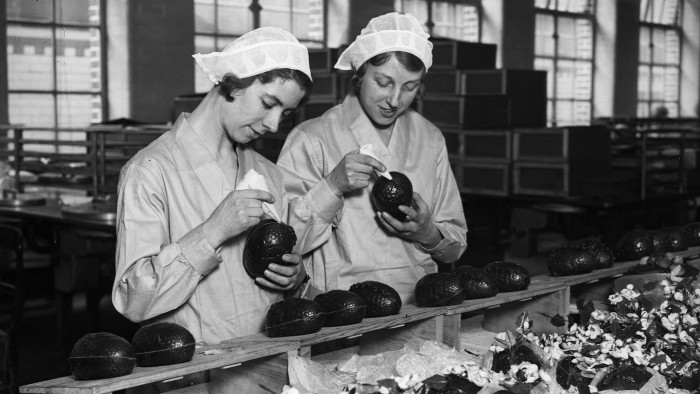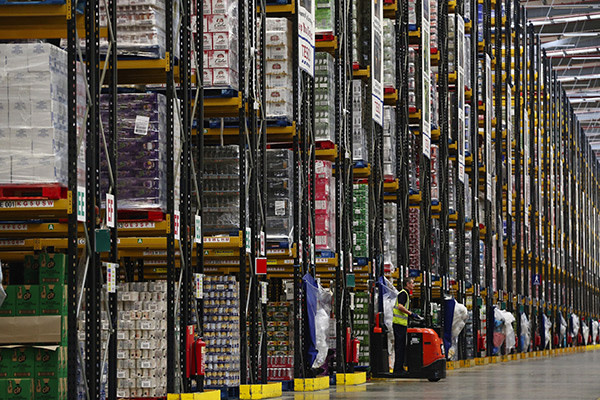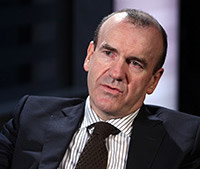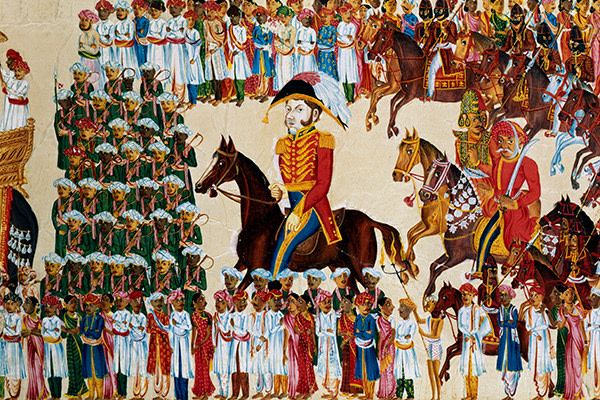Beware the Ozymandias syndrome

Roula Khalaf, Editor of the FT, selects her favourite stories in this weekly newsletter.
In May, Ed Miliband, leader of the UK’s Labour party at the time, made a last-ditch attempt to convince the electorate to vote his way by unveiling a large stone into which six manifesto pledges had been carved. The plan — abandoned when Labour sank to election defeat days later — was to plant the “EdStone”, as it was immediately and cruelly dubbed, in the garden of 10 Downing Street as a reminder of the party’s promises.
Too many business leaders do the metaphorical equivalent by setting their strategic pledges in stone even as the changing situation renders their Ozymandian ambitions irrelevant.
If there is one lesson from the history of long-lived companies, it is that they need to maintain the flexibility to change course, change leader, and even change business, if they are to continue to thrive.
Some of these lessons are embedded in the history of the FT30, the original London benchmark stock market index, first published in 1935. Only two of the original 30 companies have been uninterrupted members since inception: Tate & Lyle, the sweeteners group, and GKN, the engineering company.
Their history is one of adaptation and luck. Over the years, Tate refocused on speciality ingredients, moving away from sugar, its historical staple. It sold its branded sugar business in 2010. GKN used to make nails and hooks, among other products. Its diversion into the lucrative automotive business happened in large part because a German company in which GKN had invested indirectly in the 1960s made the constant velocity joints that became fundamental to modern cars.
To assume that luck alone will ensure longevity would be as misguided as constructing a Milibandesque monolith.
Manuel Hensmans, a professor of management at Toulouse Business School, says companies need “custodians of continuity”: senior directors or longstanding investors who set inevitable transformations in the context of the longer history of the business.
In 2013, Prof Hensmans wrote, with Gerry Johnson and George Yip, an analysis of successful British companies. Strategic Transformation focused on Cadbury Schweppes, the confectionery company, Tesco, the supermarket chain, and Smith & Nephew, the maker of medical equipment, up to the mid-2000s. It concluded that four strategic “traditions” helped to sustain long-lived companies.

Continuity involves reinventing historical success. Anticipation prepares the next generation to take advantage of “happy accidents” and unforeseen opportunities. Contestation encourages challenge and self-criticism among senior managers. Mobility brings new blood into the company, based on informal procedures that allow “mavericks” to flourish.
When the book appeared, both Tesco and Cadbury Schweppes had peaked. The supermarket chain has had to rein its ambitions back since the much-lauded Sir Terry Leahy stepped down as chief executive in 2011, while Cadbury Schweppes was broken up into its chocolate and beverage operations, with the former sold to what is now Mondelēz in the US in 2010.

Prof Hensmans says the Cadbury Schweppes demerger doomed the group. It ended useful internal tension between the confectionery arm, which represented continuity, and the beverage operation, which represented change.
John van Reenen, director of the Centre for Economic Performance at the London School of Economics, has studied some of the less high-profile strategies employed by companies that are successful over the long term. Together with McKinsey, the consultancy, and professors from Stanford and Harvard, the LSE has produced a world management survey. Prof van Reenen says the use of techniques such as “lean manufacturing” correlate strongly with survival. “The more basic things — doing everything in a consistent, effective, high-quality way — are usually underestimated.”
Eastman Kodak
Founded 1888
Photography company

George Eastman came up with an affordable combination of roll film and camera in the 1890s and Kodak traded successfully on the back of his innovation for more than 100 years. The company knew about the coming digital revolution. In 1975, an employee invented a crude digital camera. But analogue film remained a huge generator of cash — the peak year for roll-film sales was as late as 1999. Digital technology was a risky investment in the eyes of analysts, investors and, until it was too late, most executives. Kodak filed for Chapter 11 bankruptcy protection in 2012, emerging in 2013 as a much smaller business selling imaging equipment and services to businesses.
Typically, long-lived companies do not indulge in sudden lay-offs or rebranding, according to Prof Hensmans. They also avoid what he calls “the yearly 20 per cent profit-increase fetish”, which he says was the undoing of Tesco under Sir Terry.
Analysts are starting to develop techniques to measure areas that go beyond total shareholder return and look at the long-term value of policies that have a positive environmental, social and governance (ESG) impact.
This year, for the first time, Harvard Business Review included such measures in its ranking of the 100 best-performing long-tenured chief executives. One controversial effect was that Jeff Bezos, founder of Amazon, the online retailer, who would have topped the 2015 list as he did last year, dropped to 87th place. This was the man who said in his 1997 letter to shareholders that “a fundamental measure of our success will be the shareholder value we create over the long term”.
According to Michael Jantzi, chief executive of Sustainalytics, the research group that provided the ESG data for the HBR ranking, the measurements provide a lens that “helps define that elusive quality of management”.
The fate of the 28 other companies that made up the original FT30 is not as tragic as their disappearance from the index suggests. Many of them live on within larger groups or as independent companies. Rolls-Royce and Imperial Tobacco survived or revived to rejoin the FTSE 100. Coats, the threadmaker, emerged with its own stock market listing after multiple owners and is looking ahead to a point when 3D printing of garments may mean its strategy is no longer based on the product it has sold for well over a century.
In parallel with the increased emphasis on the importance of “softer” measures of companies’ survival prospects, there is a growing realisation that the old organisational structure may not even be necessary for certain aims to be achieved.
The realisation is not new. In 2003 John Micklethwait and Adrian Wooldridge pointed out in The Company: A Short History of a Revolutionary Idea that “while the company in general has never seemed more vibrant, individual companies have never seemed more fragile and insubstantial. The East India Company lasted for 258 years; it would be remarkable if Microsoft reached a quarter of that lifespan.”

Now more companies choose to spin out successful internal enterprises, or create them deliberately in order to manage medium-term entrepreneurial strategies. Pharmaceutical groups have reduced direct spending on research. Instead they delegate it to networks of smaller groups that have incentives to exit from the business profitably when a breakthrough is licensed.
Nokia
Founded 1865
Telecoms

The Finnish tyres-to-timber conglomerate became a case study in corporate turnarounds in the 1990s, when it pulled out of a nosedive by focusing on its fast-growing mobile telecoms business. As the dominant handset manufacturer of the following decade, Nokia looked unbeatable, but it was wrongfooted by Apple’s iPhone, while lower-cost producers attacked it in growth markets. Having sold its mobile device business to Microsoft in 2013, Nokia was left with another chance to reinvent itself as a maker of telecoms equipment. The group was confident enough to launch an all-share bid for rival Alcatel-Lucent in April.
Anita McGahan, a professor at the University of Toronto’s Rotman School of Management, contrasts these successes with the “tragedy” of Xerox’s failure to capitalise on many of the innovations it developed in its Parc research centre on the US west coast in the 1980s and 1990s.
Some businesses may even have to jettison the objective of survival. As Prof McGahan has written, organisations are already “arising to create much-needed infrastructure, fulfil intermediate objectives and manage difficult trade-offs”, that is, carrying out a mission, such as staging an event or completing a project.
When the London 2012 organisers were planning the Olympic Games, they were already programming a wind-down phase called “dissolution”. For many companies, dissolution is the biggest challenge of all. In future, some may have to recognise that they cannot reinvent themselves and their long existence is coming to a logical end. Too often, this final act is chaotic.
Yet longevity is not in itself a virtue. In some cases, it may be better to plan ahead for the dismantling of an organisation that has done its job and nominate one last staff member to switch off the lights.
Comments